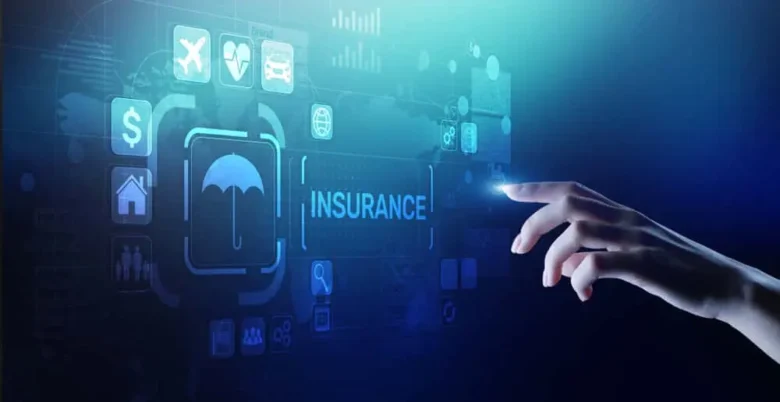Microinsurance provides affordable insurance to low-income earners who cannot afford traditional insurance. With the rise of smartphones and mobile networks, microinsurance is reaching more people than ever before. It is protecting rural and underserved communities and closing the insurance gap. Mobile technology is making insurance affordable, easy, and accessible to those who need it most but cannot afford or understand conventional insurance solutions.
Mobile Phones as a Tool for Insurance Access
The growing use of mobile phones has enabled insurance companies to reach people directly, even in rural areas. Insurers can now use SMS, mobile apps, and USSD codes to sell products, collect payments, and make policy changes. This feature eliminates the need for physical branches and long travel distances that can be a barrier for poor and rural areas. More and more consumers are exploring insurance options that they would otherwise overlook due to the convenience and simplicity of mobile devices.
Easy Registration and Policy Management
Traditionally, insurance plans are complex and paper-based. Digital interfaces on mobile devices simplify this process. Get insurance, view your plans, and make renewals or claims with just a few clicks on your phone. Insurance companies are now using vernacular languages on mobile platforms, making the process easier for non-native speakers. The appeal of microinsurance stems from its accessibility.
Pay-As-You-Go Models Enabled by Mobile Payments
Mobile money services are a valuable tool for microinsurance. These measures enable small, regular premium payments that fit the financial lifestyles of low-income earners. Users can donate daily, weekly, or monthly through their mobile wallets instead of paying an annual fee. Pay-as-you-go insurance matches people’s consumption habits and is cheaper and more flexible.
Using Mobile Data to Tailor Insurance Products
Mobile technology helps insurance companies collect customer behavior, preferences, and usage statistics. With the user’s consent, the company can use this data to create customized microinsurance products for different groups of people. Farmers can get crop insurance based on the weather, while street vendors can get daily income protection. A tailored insurance policy guarantees value and coverage for real risks.
Simplified Claims Processing
The long claims process of traditional insurance is a major problem. Users can file a claim via their mobile phone, which streamlines the process. Some platforms use automated processes to approve small claims instantly. You may upload a photo or provide an explanation as an alternative to completing a lengthy form. This simple approach can build trust and encourage more people to consider microinsurance because they can get help quickly when they need it.
Mobile Network Operators Expand Coverage
The success of microinsurance depends on mobile network operators (MNOs). These companies have a large consumer base, trusted brands, and extensive urban and rural infrastructure. Insurers can reach millions of users through SMS advertising, airtime offers, and bundled services by partnering with mobile network operators. Some mobile phone plans offer free life insurance to users whose accounts are topped up regularly. These agreements have accelerated the growth of insurance companies.
Using Mobile Tools for Education
Ignorance is often the reason people don’t buy insurance. Videos, audio messages, and interactive text message quizzes enhance education through mobile electronic devices. These tools explain insurance: what it is, why it’s important, and how it can benefit you. Users feel confident in their messaging decisions because the content is simple and in their native language.
Leveraging Smartphones for Advanced Services
Mobile apps are increasingly becoming a tool to improve microinsurance in areas with high smartphone usage. Apps can provide real-time alerts, GPS assistance, secure biometric logins, and policy comparisons. These digital tools improve customer service and put users in control. When consumers can view and manage their insurance coverage, it becomes easier to stay enrolled and keep their plans up to date.
Disaster and Emergency Response Support
Microinsurance provides protection against natural disasters and health emergencies. Mobile technology helps insurance companies respond quickly to crises. Mobile applications can assess flood and earthquake damage and make payments quickly. Satellite imagery, mobile phone measurements, and SMS confirmations are all available. Rapid emergency response can increase insurance values and coverage rates for vulnerable groups.
Innovative Problem Solving
Mobile devices have transformed microinsurance, but challenges persist. Poor internet connectivity, digital literacy, and data privacy issues need to be addressed. Insurance companies and IT companies are constantly innovating to overcome these obstacles. Mobile microinsurance is becoming increasingly secure and comprehensive, with offline capabilities, voice-activated systems, and superior data protection. Advances in technology are making it possible to cover even remote settlements.
Empowering Women and Minorities
Mobile microinsurance also has the potential to empower women and other vulnerable groups who lack access to financial resources. Although women are responsible for household budgets and healthcare, they are less likely to have formal insurance. This gender gap is closing as mobile platforms give women immediate access to financial resources, specialist insurance, and medical support. This approach strengthens financial resilience and promotes gender equality and economic participation.
Fostering a Culture of Financial Security
The mindset shift that mobile microinsurance brings is likely to have the greatest impact. As more people buy insurance via their mobile phones, they see it as normal and necessary. Long-term financial stability requires this cultural transformation. Communities learn about risk management and gain confidence in using insurance to protect their lives, health, and livelihoods.
Conclusion
Mobile technology is revolutionizing microinsurance, protecting millions of vulnerable people around the world. Mobile platforms are making insurance more accessible, affordable, and user-friendly through streaming access, payments, personalization, and claims. Mobile microinsurance will expand as digital infrastructure evolves. This innovation is increasing financial inclusion, resilience, and peace of mind for vulnerable groups around the world.
FAQs
1. What is microinsurance?
Microinsurance provides affordable coverage to low-income earners who are excluded from the mainstream insurance market.
2. How does mobile support microinsurance?
Mobile devices simplify access, payment, and communication. They allow consumers to sign up, manage policies, and file claims via their mobile phone.
3. Can mobile money pay for microinsurance?
Mobile financial services can enable small, flexible payments of microinsurance premiums, making insurance more affordable for low-income earners.
4. Is mobile microinsurance safe?
Most systems use encryption, passwords, and biometric logins to protect user data and transactions.
5. Who benefits most from mobile microinsurance?
Mobile microinsurance makes insurance more affordable and accessible to low-income earners, rural residents, women, and underrepresented groups.




